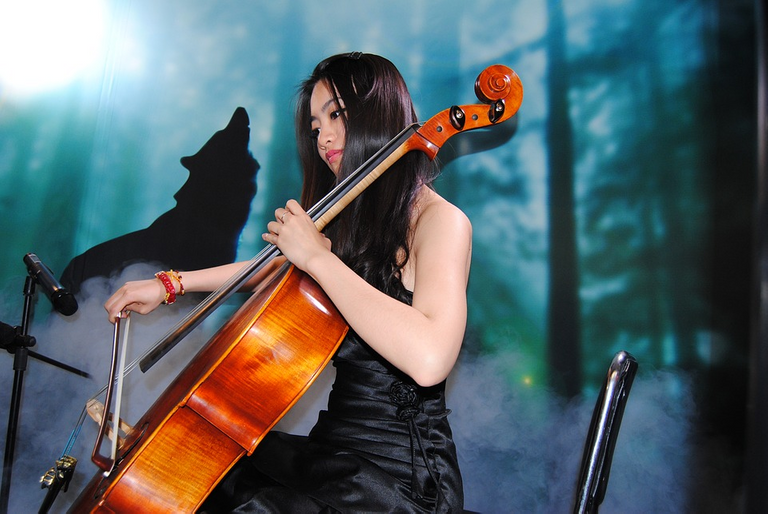Curating the Internet: Science and technology micro-summaries for October 29, 2019
Blind orchestra auditions might be a good idea, but the popular press has probably over-hyped their benefit for women; IEEE opens a collaboration platform, Collabratec; An AI algorithm for estimating crowd size; More on the tiny autonomous swarming drones; and a video discussion of the science behind artificial gravity in space
Straight from my RSS feed | Whatever gets my attention |
Links and micro-summaries from my 1000+ daily headlines. I filter them so you don't have to.
- Did blind orchestra auditions really benefit women? - Reporting on a study from the year 2000, which examined data from the 1950s through 1990s, a number of press sources have uncritically repeated the claim that implementing blind auditions in orchestras increased the success rate for women by 50%. Now, however, Andrew Gelman looks at the original paper. It turns out that the results were not statistically significant, any effect that might have existed was drowned out by the statistical noise, and Gelman could find no basis in the paper or data to support the 50% claim. Finally, there were some observations in the data where women actually did worse under the blind audition protocol. In summary, using blind auditions in orchestra probably makes sense, but claims about how women have benefited from the practice might be regarded with some skepticism. h/t Daniel Lemre
- Introducing IEEE Collabratec - In this month's issue of the Proceedings of the IEEE, the organization announces the new collabratec.org web site. The announcement says that it's intended for collaboration and networking among "IEEE members, researchers, authors, and technology professionals with similar fields of interest". It also offers the possibility for this community of professionals to create and manage content.
- AI could help work out how many people are in large crowds - In recent research, Reza Bahmanyar and colleagues from the German Aerospace Center developed a method to use AI systems to count the sizes of large crowds. The method involved manually counting somewhere approaching 250,000 people in 33 images of crowds that were taken from planes, drones, and helicopters. Once the counting was done, those photos were used to train the AI algorithm. The algorithm, known as MRCNet, works by dividing the images into squares, and then analyzing the people in each square. The method offers benefits in both accuracy and speed. It is 15% more accurate than its best competitor, and can analyze a single square in just 0.03 milliseconds. This work may be important because disputes over crowd sizes are common fodder for fact checking organizations. h/t Communications of the ACM
- Swarm of tiny drones explores unknown environments - More about the swarming drones from Curating the Internet: Science and technology micro-summaries for October 27, 2019. Key points are that they were inspired by nature, and can be used for a variety of purposes including search and rescue activities. One example of use might be for rescue workers to release a swarm of drones in the immediate aftermath of a disaster and perform a sort of triage by mapping the area and finding the locations where rescue attention is most urgently needed. Challenges that the researchers surmounted included basic flight, avoiding collisions, and autonomous operation. To avoid collisions, the drones are fitted with wireless chips and they maintain separation by monitoring the signal strength from other drones. To achieve autonomous operation, the drones use an algorithm that was modeled after insects, where they keep track of major landmarks, but don't keep detailed maps. The only hard requirement for navigation is that the drones must be able to get back to their power source for recharging. Other decisions are made in real time. The work was presented in the October 23 issue of Science Robotics. Related: (See Curating the Internet: Business and leadership micro-summaries for October 25, 2019 for a real-world success of drone technology in search and rescue.)
This video was included in Sunday's post, but in case you missed it, here it is again:
In order to help bring Steem's content to a new audience, if you think this post was informative, please consider sharing it through your other social media accounts.
And to help make Steem the go to place for timely information on diverse topics, I invite you to discuss any of these links in the comments and/or your own response post.
Beneficiaries
- Burn Steem/SBD - @null - 5%
- Cited author(s) - @answerswithjoe - 10%
- Fundraising for the Rustin Golden Knights Marching Band - @rgkmb-unofficial - 10%
- Posting and/or scheduling service (steempeak.com) - @steempeak - 5%
- Science, Technology, Engineering, and Math (STEM) curation on Steem - @steemstem - 5%
- Steem/API services (anyx.io) - anyx - 5%
- Steem/RSS services (steemrss.com) - torrey.blog - 5%
About this series
Sharing a link does not imply endorsement or agreement, and I receive no incentives for sharing from any of the content creators.
Follow on steem: @remlaps-lite, @remlaps
If you are not on Steem yet, you can follow through RSS: remlaps-lite, remlaps.
Thanks to SteemRSS from philipkoon, doriitamar, and torrey.blog for the Steem RSS feeds!
0
0
0.000

Your post has been supported and upvoted from the Classical Music community on Steemit as it appears to be of interest to our community. We also support jazz and folk music posts!
If you enjoy our support of the #classical-music community, please consider a small upvote to help grow the support account!
You can find details about us below.
The classical music community at #classical-music and Discord. Follow our community accounts @classical-music and @classical-radio or follow our curation trail (classical-radio) at SteemAuto!
Delegation links: 10SP, 25SP, 50SP, 75SP, 100SP, 150SP, 200SP, 250SP, 500SP, 1000SP